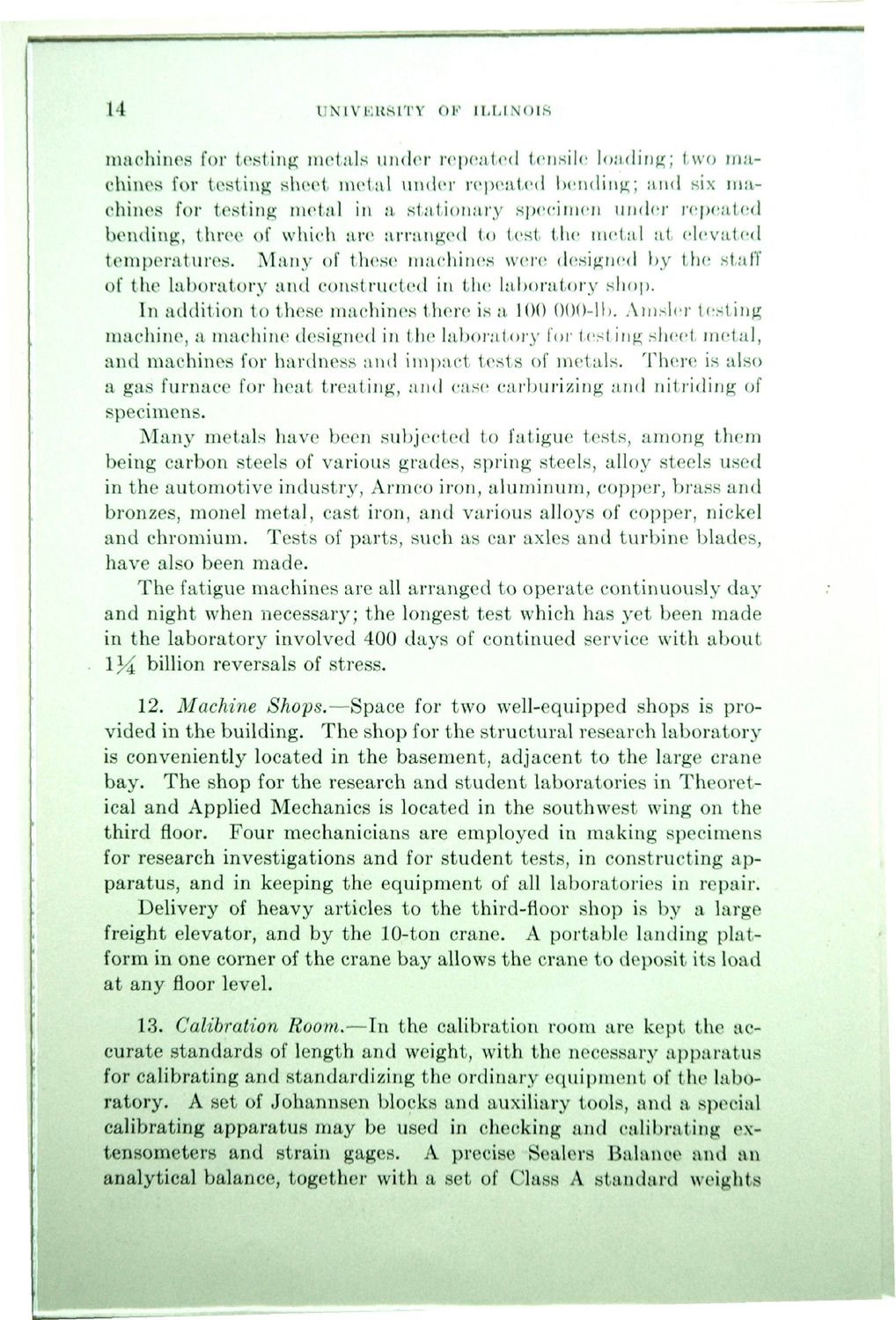| |
| |
Caption: Dedication - Materials Testing Lab Dedication
This is a reduced-resolution page image for fast online browsing.

EXTRACTED TEXT FROM PAGE:
14 UNIVERSITY OF ILLINOIS machines for testing metals under repeated tensile loading; two machines for testing sheet metal under repeated bending; and six machines for testing metal in a stationary specimen under repeated bending, three of which are arranged to test the metal at elevated temperatures. Many of these machines were designed by the staff of the laboratory and constructed in the laboratory shop. In addition to these machines there is a 100 000-lb. Amsler testing machine, a machine designed in the laboratory for testing sheet metal, and machines for hardness and impact tests of metals. There is also a gas furnace for heat treating, and case carburizing and nitriding of specimens. Many metals have been subjected to fatigue tests, among them being carbon steels of various grades, spring steels, alloy steels used in the automotive industry, Armco iron, aluminum, copper, brass and bronzes, monel metal, cast iron, and various alloys of copper, nickel and chromium. Tests of parts, such as car axles and turbine blades, have also been made. The fatigue machines are all arranged to operate continuously day and night when necessary; the longest test which has yet been made in the laboratory involved 400 days of continued service with about 1% billion reversals of stress. 12. Machine Shops.—Space for two well-equipped shops is provided in the building. The shop for the structural research laboratory is conveniently located in the basement, adjacent to the large crane bay. The shop for the research and student laboratories in Theoretical and Applied Mechanics is located in the southwest wing on the third floor. Four mechanicians are employed in making specimens for research investigations and for student tests, in constructing apparatus, and in keeping the equipment of all laboratories in repair. Delivery of heavy articles to the third-floor shop is by a large freight elevator, and by the 10-ton crane. A portable landing platform in one corner of the crane bay allows the crane to deposit its load at any floor level. 13. Calibration Room.—In the calibration room are kept the accurate standards of length and weight, with the necessary apparatus for calibrating and standardizing the ordinary equipment of the laboratory. A set of Johannsen blocks and auxiliary tools, and a special calibrating apparatus may be used in checking and calibrating extensometers and strain gages. A precise Sealers Balance and an analytical balance, together with a set of Class A standard weights
| |